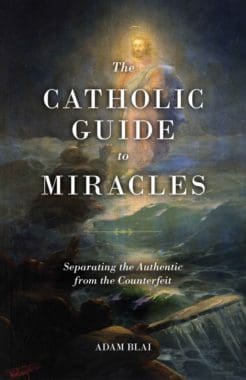Miraculous Healings
The most rigorously investigated miraculous healings are those that are submitted as evidence for beatification and canonization. As we have seen, for a healing to be considered miraculous, it must be spontaneous, instantaneous, complete, lasting, and unexplainable by modern medicine. All of the material related to the purported miracle is first studied by the postulator of the cause for sainthood. This involves gathering all the medical data and consulting competent medical experts in the relevant specialties. Then the dossier is submitted to the Holy See, which scrutinizes it closely and potentially investigates further. There must be no room for doubt about a potential miracle used to beatify or canonize a person. Therefore, the miracles that have been accepted for beatifications and canonizations are the best examples of miraculous healings we have.
Miraculous healings were important in the time of Jesus, and they are important now. God’s meeting our needs in a special way is not only something we hope for personally but something we want to hear about. Even hearing about a healing comforts us and gives us hope, often more so than other types of miracles. The alleviation of suffering demonstrates not just that God is real, but that He loves and cares for us.
But what determines who gets chosen to be healed? During the investigation of the causes of saints there is a global call for miracles, and millions around the world pray for them. Only a handful are verified and publicized, and likely some other legitimate healings are not made public because they were not chosen to substantiate a cause. The shrine at Lourdes, which we will consider in the next chapter, gives us a sense of numbers. About six million people visit the shrine per year, and there have been between 60 and 70 verified healings since 1858. Even if only 30 percent of the visitors are seeking healing and the rest are family and friends, that amounts to 291 million people who prayed there for a healing since 1858. That is a verified miraculous healing rate of about 0.0000002 percent. Is this reflective of God’s limited activity, or are there other factors?
Recall that Thomas Aquinas first defined miracles as things we cannot explain. The healings we can explain have certainly increased as science has progressed, and many events once considered miraculous are no longer so considered. Aquinas then described three orders of miracles: things that nature cannot do (raising the dead), things that nature can do but in a different order (restoring sight to those born blind), and things that nature does but at a different speed (curing an infection and fever instantly instead of over days). The Church sets the bar for a healing to be declared miraculous very high in order to separate acts of God from nature conclusively, but does God operate only in this extreme? Is God limited to acting only in the ways we define? We will never know in this life how many times God intervened more subtly in the sufferings of the praying faithful, in ways that don’t fit the Church’s stringent but prudent criteria but were still truly miraculous.
The idea of praying for a healing is all but universal. When we cease to feel in control of our lives, we appeal to God to regain something like control through Him. If we can make God do our will, then things will be safe again. But I think the universality of this kind of prayer has another explanation: on some level, we know that healings are more common than the one-in-a-million verified miracles at Lourdes. I know that I am not alone in having heard many stories of prayer saving a person’s life or alleviating suffering. These stories may not pass rigorous scientific muster, but God is not limited by science, and not everything that is “explainable” by science happened through purely natural means. I think that God’s healings are numerous, but most are never heard of. Millions may have been healed in a quiet way.
I have a priest friend who does expositions of holy relics, including a large relic of the true Cross. He has thousands of emails from people claiming to have been healed after touching the relics. Many have sent in medical verification. That is only one priest’s ministry: How many other quiet healings have occurred?
Jesus came not to ignore our pleas but, as He said, that we “may have life and have it abundantly” (John 10:10).
+
This article is adapted from a chapter in The Catholic Guide to Miracles by Adam Blai, which is available from Sophia Institute Press.
Art for this post: Cover and featured image used with permission.





